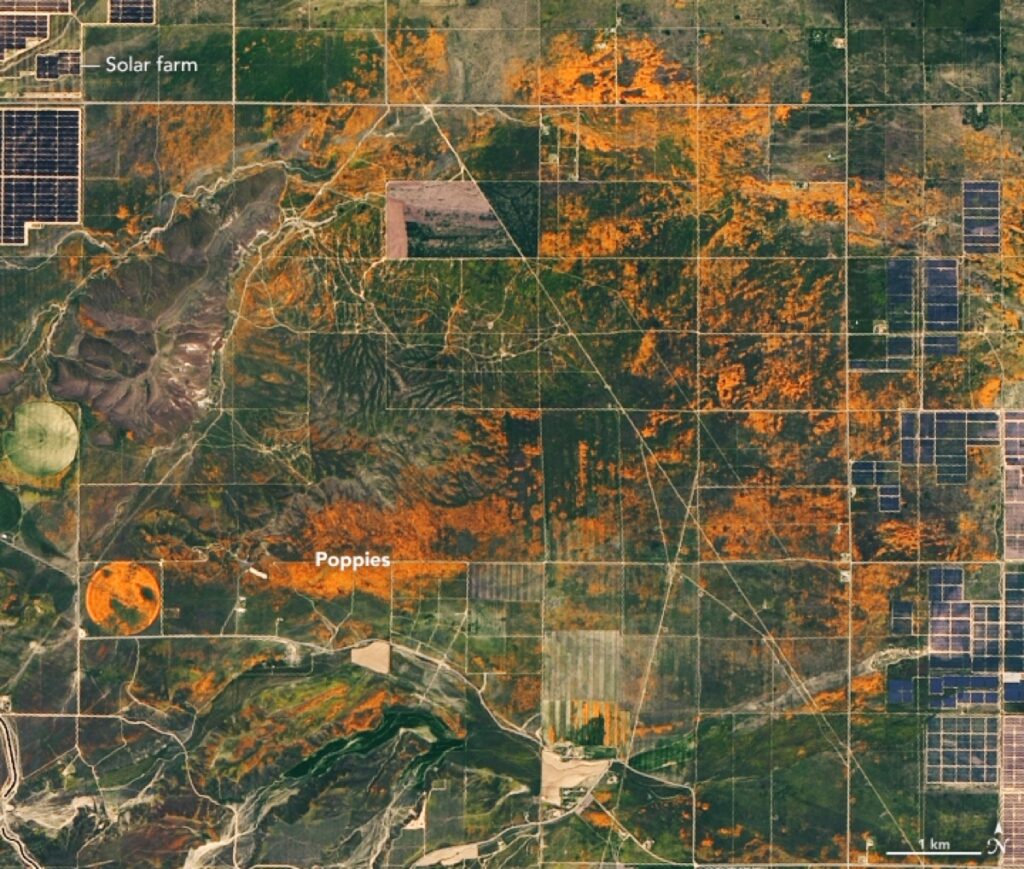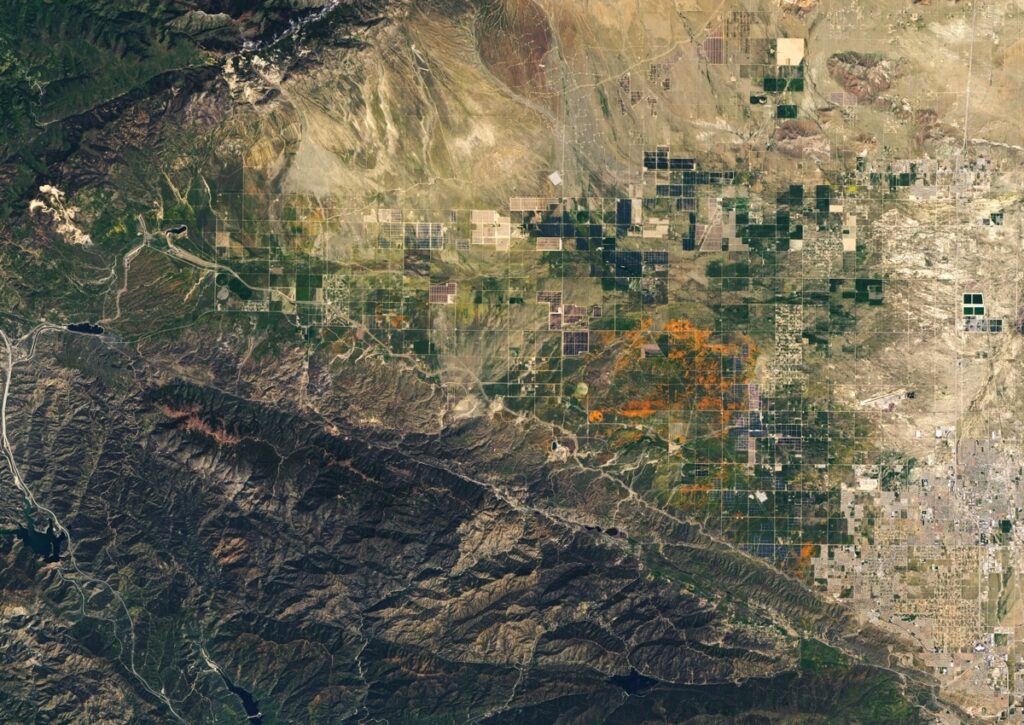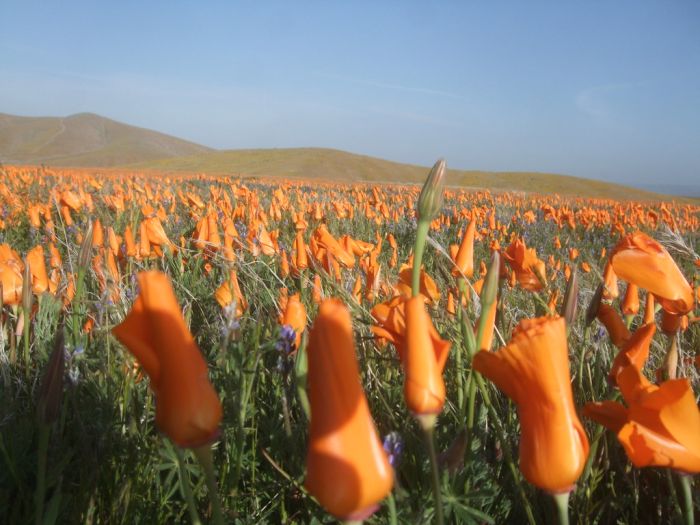
The satellites of NASA captured the spectacular phenomenon of the superbloom – which happens approximately once in every ten years – in Antelope Valley, California.

Antelope Valley is located near the western tip of the Mojave Desert, just a few miles away from NASA’s Armstrong Flight Research Center. The pictures were taken by the Landsat 8 satellite when the blooming was thought to be at its peak.
As a result of the superbloom, the deserts of the Temescal Mountains are enchanted with vibrant orange poppies which cloak the hillsides in a fiery wave. Thanks to NASA, we can now bear witness to this natural wonder from a whole different perspective.


This exceptional sight is the result of the concentration of particular events; in the first place, the soil must receive a significant amount of rain in the autumn, which needs to penetrate deep into the ground.
If the rainfall is too excessive, the seedlings can easily be washed away by the floods.

For the young plants to rise to the surface of the soil, the desert must have enough cloud cover after the rainfalls, to protect the plants from the heat and the freezing cold of the night. Then, the area has to be free of strong winds which could rip out or damage the seedlings.
According to NASA, the poppies can change appearance, depending on the weather. When the sun is shining the flowers open their petals but during colder days they close up.

Super bloom at the Antelope Valley California Poppy Reserve, 2019. Image credit: California Pete
If you are curious about the blooming, you can take a look at the live stream of Antelope Valley California Poppy Reserve.

Leave a Reply